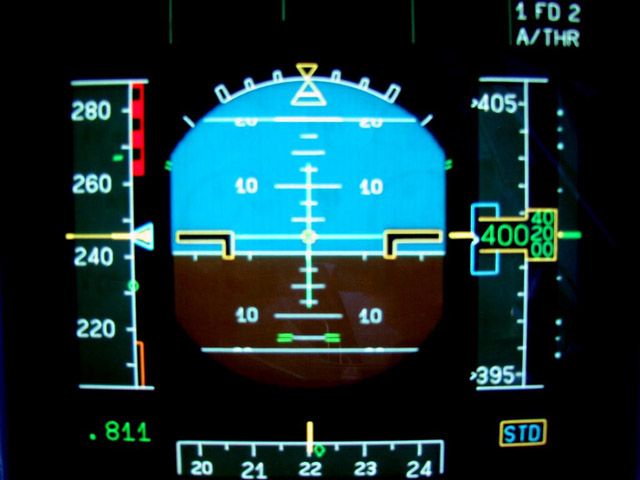Originally Posted by
gums
I don't side with the 'bird on this one. The rapidly moving "tape" display is a good indication of "trend", and then you might be able to actually read the altitude if the sucker wasn't going as fast as AF447.
You would - as I mentioned earlier, the Viper used a "tape" display for altitude on the HUD if I'm not mistaken...

Derfred is half right - ADI is important, but where I disagree is that I'm pretty convinced that they were looking at the ADIs, it's just that there was a lack of concerted effort to get "on the same page" when it came to what they meant and what to do about it - in this case I reckon it was because the PF's brain went to panic stations upon AP disconnect, and never really left that state. The PNF tried to snap him out of it verbally, but as has happened many times before (e.g. Birgenair 301, West Caribbean 708), verbal intervention was not enough.
As an aside, I dug up this image which purports to be a real A330 PFD:

As you can see, at FL400 the most significant three digits are emphasised on the numerical display, and because of this emphasis it should be fairly easy to determine that the numbers are winding down (even more obvious in concert with the "tape" and the V/S pointer).
While I don't doubt 'bird's conviction that a dial display can be perceived marginally more easily when it comes to determining a trend, ultimately there is no evidence that the crew had any trouble reading their altitude from the PFDs, nor that they had trouble telling whether they were climbing or descending.
@Chris Scott - Agreed, and I said as much a wee while ago.
@john_t - While I definitely concur, there is an aviation-specific "gotcha" to startle response discovered as part of the investigation of the A300 over Orly, namely that (IIRC) 80% of pilots will instinctively pull up when sufficiently alarmed, and training should definitely take this into account. Also, sometimes "overtraining" can have unintended consequences - there was an interesting view on the 1977 Tenerife accident which put forward the theory that Captain van Zanten had spent so long training other pilots in the simulator - in which takeoff clearance is invariably automatically given - that his mental model assumed takeoff clearance had been given when in fact it had not. That said, if you have a look at my post in another thread here :
http://www.pprune.org/tech-log/53804...ml#post8493133 , then you can see that I'm very much in favour of airlines putting more emphasis into basic handling (and aeronautics 101) when it comes to training!
On the "old chaps" front, while I'm definitely a believer in the "no substitute for experience" maxim (funnily enough, more so the older I get

) - I think it's worth pointing out that in the Birgenair and West Caribbean accidents, it was the Captain on each flight - both of whom were decorated Air Force veterans - who misjudged the situation, pulling up into the stall and holding it there. In both cases, the younger F/Os correctly diagnosed the stall and tried to get their captain to realise this by prompting them verbally, but could not bring themselves to physically intervene even though it would cost them their lives.